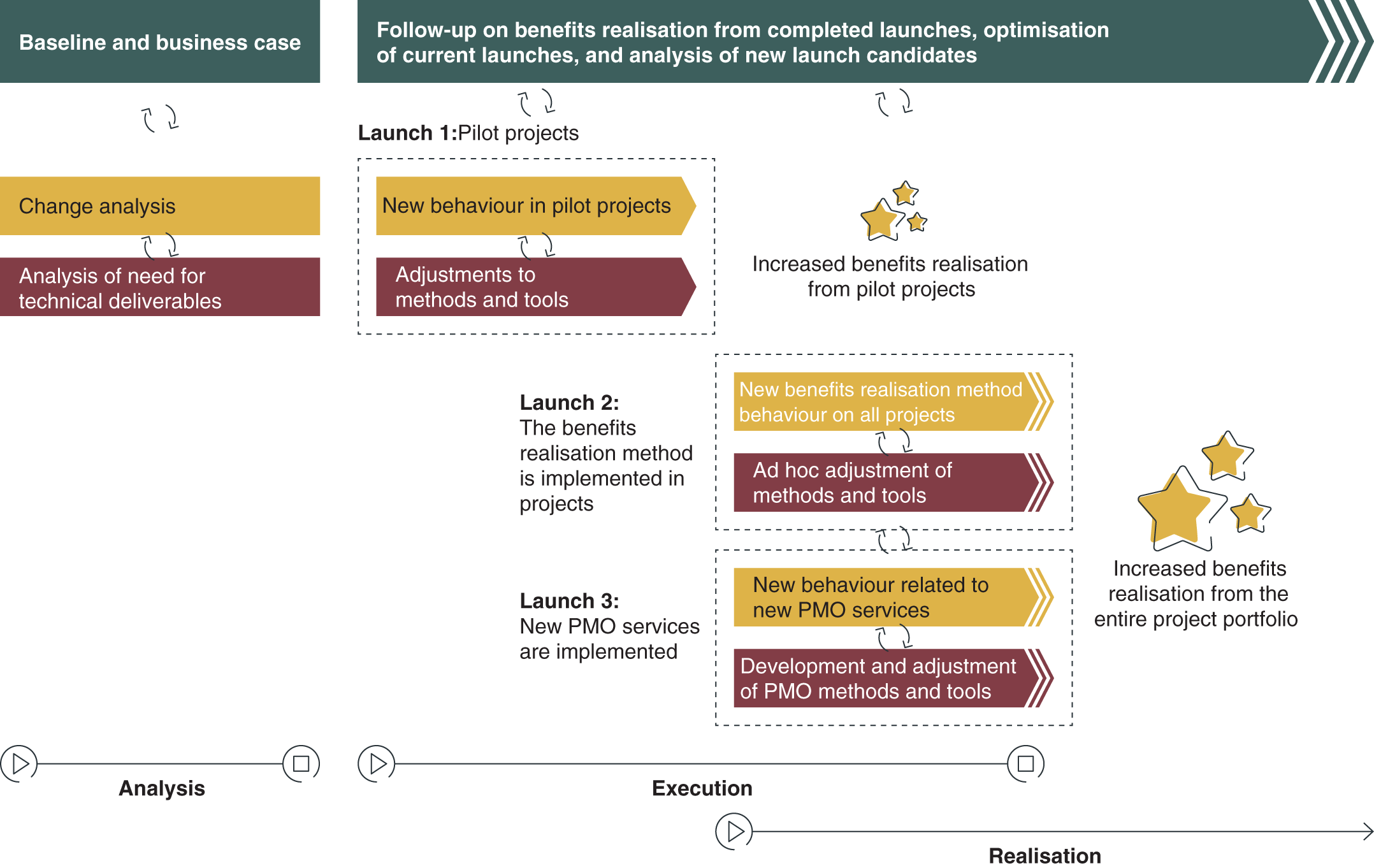10
Implementing Benefits Realisation
The ambition of the final part of the book is to provide inspiration for how to implement and anchor the benefits realisation method in your organisation. This will ensure that your change projects’ benefit potential will be realised.
“Benefits realisation has helped Ørsted create significantly more value with our projects and epics1 through better prioritisation decisions, clear managerial ownership, and structured follow-up.”
Kenneth Theilgaard Roslind, Chief Digital Officer at Ørsted2
Throughout the book, we have dealt with how the benefits realisation method helps to increase value creation in projects. One of the most important conclusions has been that successful implementation of benefits realisation is very much about changing behaviour and that you can come a long way with just a few simple tools. At the same time, efficiently scaling the use of the benefits realisation method can be achieved with the help of a portfolio management office (PMO).
In this book, we have presented two cases: Nykredit (see Chapters 3–5) was driven by a desire to increase revenue through sales of new services and products. The University of Copenhagen (see Chapter 6) was motivated by an objective to find more efficient ways of working and increasing quality and the satisfaction of internal stakeholders. Implementing the benefits realisation method in your organisation is similar to the two cases as the value of using the method only materialises when there is a change in behaviour.
Implementing the Benefits Realisation Method Is a Change Project
All organisations are different, which means that there is more than one road to successfully implementing the benefits realisation method. Nevertheless, there are several important lessons to be learnt from the organisations that have benefitted the most from using the method. These lessons are in combined into a best practice plan for implementing the benefits realisation method in Figure 10.1. Since implementing the method is a change project, we should start the project by following the recommendations of Part 2. We should make a benefit map for the project, estimate the benefits, do the change analyses for the most critical employee groups, and analyse the technical deliverables.
Many of the technical deliverables (templates, scripts, and reporting formats) can be copied directly from this book. Therefore, the technical part of the analysis can be quite small. In many cases, it becomes an initial assessment of the need for local adaptation of the methods to fit into some of the current ways of working with projects. The part of the analysis that deals with establishing new services for the PMO may include an assessment of the services to be provided by the new PMO and the order in which they are to be launched. The PMO part may also contain a technical element in the form of new or upgraded tools for portfolio, capacity, and performance management. Still, the primary effort is usually in the benefit track and change track during the analysis phase.

Figure 10.1 Best practice plan for implementing the benefits realisation method.
Using Pilot Projects to Kick Off the Implementation
Once a business case has been prepared and approved for the project ‘Implementing benefits realisation’, the first launch in the execution phase is usually a test of the method in the form of two to six pilot projects, partly to test and update the assumptions from the analysis and partly, more importantly, to create success stories and ambassadors we can use when implementing the method to the rest of the projects in the portfolio. Launches 2 and 3 include implementing the benefits realisation method throughout the portfolio of change projects and, in parallel, establishing new portfolio management office (PMO) services, depending on the organisation's needs. In large organisations, launches 2 and 3 are often broken down into a series of launches. Usually, it is impossible to cover all projects at once as part of launch 2. The use of the method will most probably be spread to another 5–10 projects each quarter, depending on the support bandwidth of the method specialists. Apart from supporting projects, the method specialists might also train new method specialists as part of building the new best practice services in the PMO in launch 3.
Ørsted is one of the organisations that has created significantly more value using the benefits realisation method. In Chapter 11, Ørsted is used as an example of a successful implementation of the benefits realisation method when best practice meets reality in a large project organisation.
